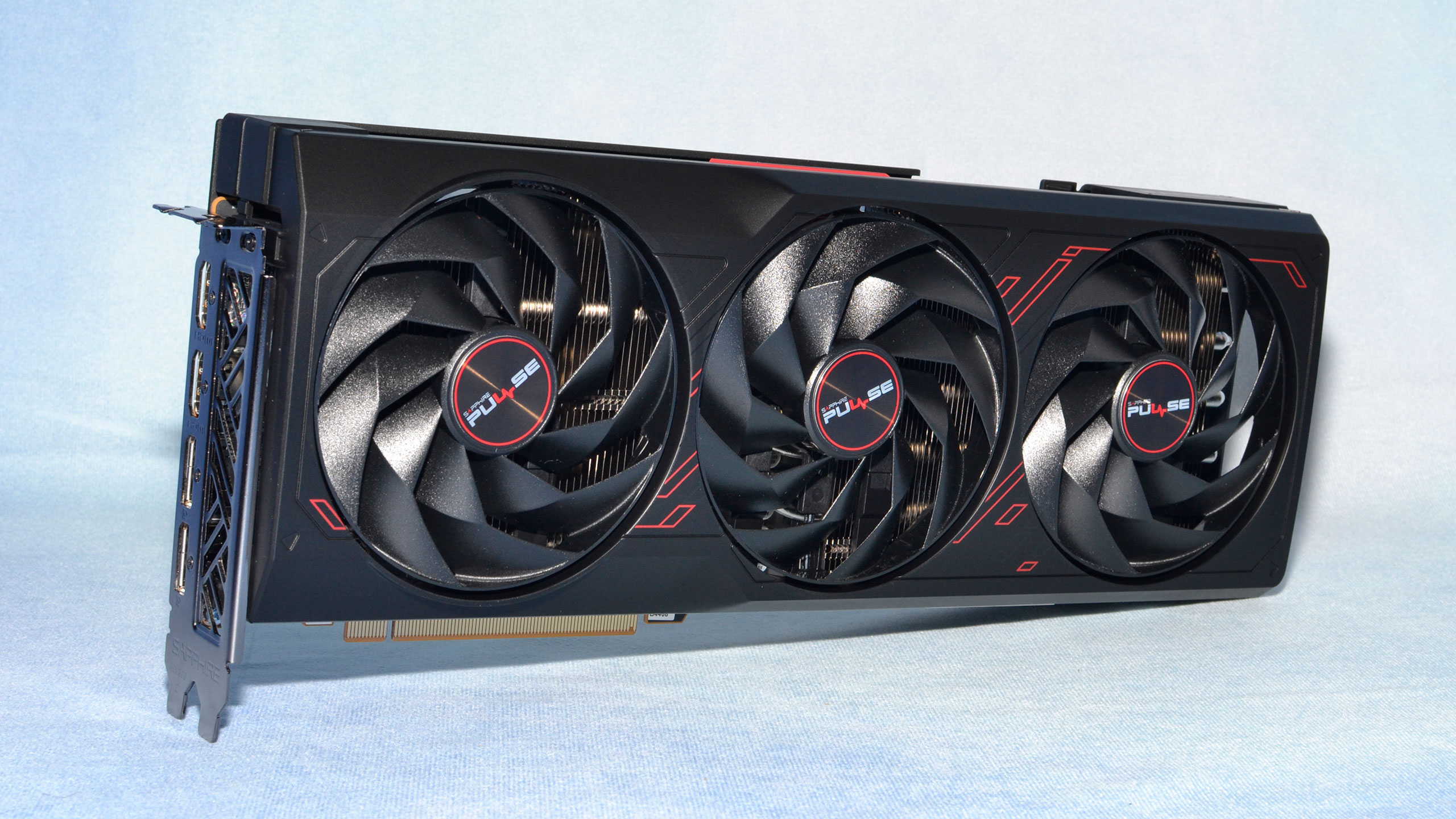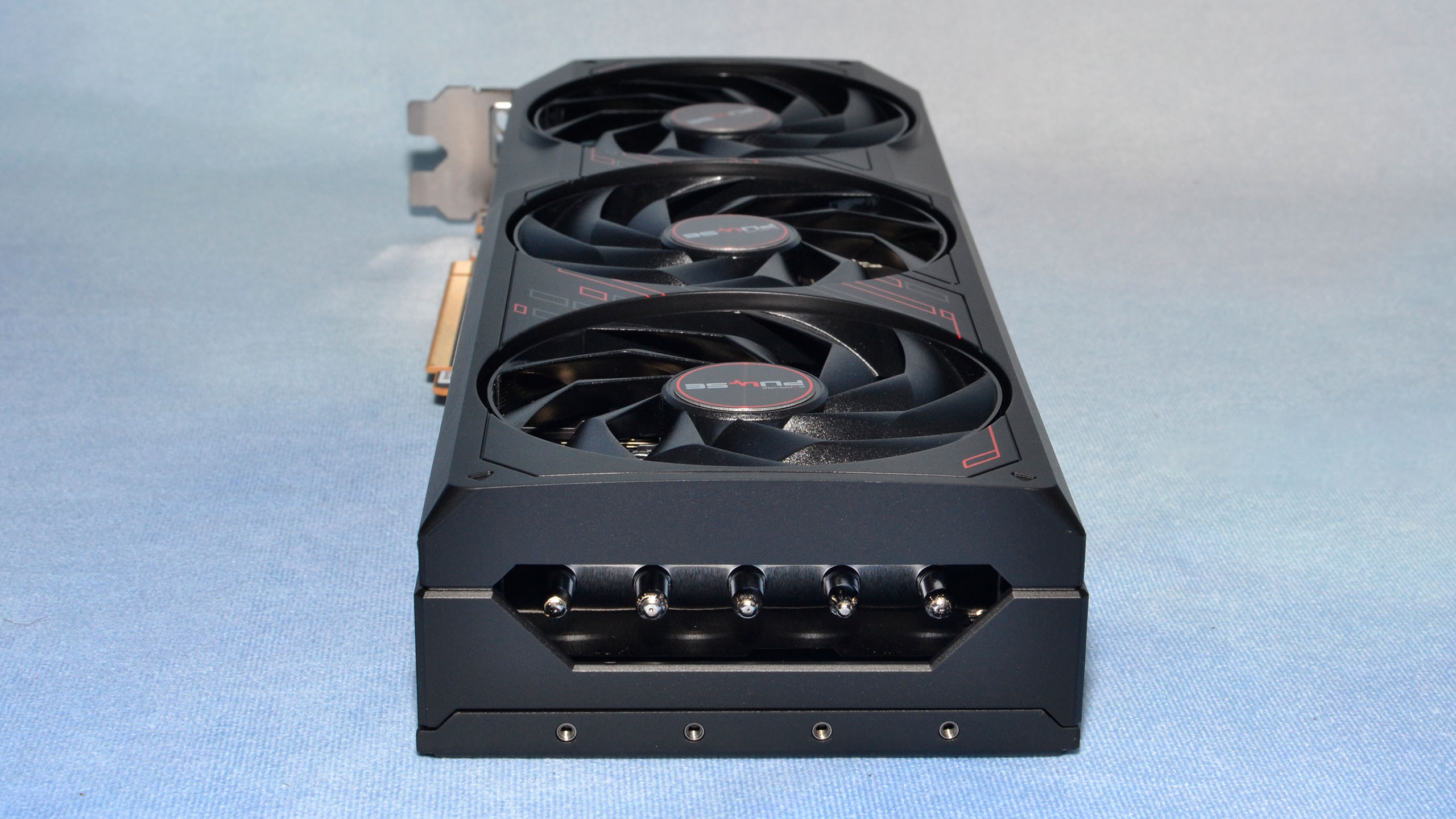Why you can trust Tom's Hardware
The AMD RX 7900 GRE isn't a new GPU, per se, as it was previously available in China. A few people might have even acquired a card and had it shipped to a different region, but in general it was difficult to find the 7900 GRE outside of Asia... until the past month, when the 7900 GRE started popping up in Europe. And now the card has officially released in the U.S. and other regions with a $549 MSRP.
It's not massively different in terms of performance from the RX 7800 XT, and there's a good chance the worldwide launch was simply delayed while AMD and its partners tried to clear out existing RX 6000-series inventory. With the previous generation Navi 21 GPUs mostly gone now, there's room for the RX 7900 GRE — and a good thing, too, as AMD's lineup wasn't doing so well against Nvidia's post-Super RTX 40-series competition.
AMD has set its sights for the RX 7900 GRE on Nvidia's RTX 4070, which now starts at $549 officially, with the cheapest models selling for $529. If you only care about rasterization gaming performance, it's an easy win for Team Red: The 7900 GRE beats the RTX 4070 by 11~18 percent at ultra settings in our test suite. However, if you're also interested in trying out ray tracing games, or in artificial intelligence workloads — including DLSS — Nvidia continues to offer strong competition overall. Both cards can handle rasterization gaming at up to 4K, but AMD's card can struggle badly with heavier ray tracing games.
Ultimately, the RX 7900 GRE offers a good value. It's equal to or faster than any of the previous generation cards, up to and including the RX 6950 XT, uses less power than those older GPUs, and costs less as well. You also get new features like AV1 encoding support, DisplayPort 2.1 outputs (which would require a recent monitor purchase to be meaningful), and improved AI hardware acceleration.
AMD's RDNA 3 architecture has been a bit of a mixed bag and a big departure from what we saw with RDNA 2. There are plenty of enhancements, but much like Nvidia's Ada Lovelace GPUs, pricing and product naming conventions have changed quite a bit. AMD's top Navi 21 GPU was used on the RX 6950 XT, 6900 XT, 6800 XT, and the vanilla 6800. At launch, Navi 31 was only used with the RX 7900 XTX and 7900 XT, with a rather large step down to Navi 32 and the RX 7800 XT. Now the 7900 GRE steps in to fill some of that gap.
Given GPU chiplets were supposed to reduce costs and make AMD more competitive, this first generation hasn't exactly revolutionized anything. But then we could say the same for AMD's Zen 2 CPU architecture. CPU chiplets really came into their own with Zen 3 and now Zen 4. Perhaps the future RDNA 4 and RDNA 5 GPUs will prove that chiplets can do more than just reduce costs.
The RX 7900 GRE priced at $549 represents basically linear scaling in price for performance on AMD's product stack. It nominally costs 10% more than the RX 7800 XT, and it's about 10% faster. Considering the cost of the rest of a PC gaming build, spending $50 more to potentially improve performance by 10% should be no-brainer if you want to pick up a fast AMD GPU, though such thinking also opens the doors to spending $400 more to get up to 40% performance if you want to start down that path.
For anyone looking to buy a good high-end AMD GPU, the RX 7900 GRE definitely warrants a look. It's a potentially better balance of price and performance than the other 7900 cards (if you're only looking at the cost of upgrading a GPU), and gives the same features. It doesn't come away with a landslide victory, but it didn't really need to.
The Sapphire Pulse model we received for review is particularly impressive in the area of noise, barely registering above the ambient noise level. We gave the overall score a half-star bump because of the Sapphire design and execution. Those who like quite PCs will find a lot to like with this particular card.
- MORE: Best Graphics Cards
- MORE: GPU Benchmarks and Hierarchy
- MORE: All Graphics Content
Get Tom's Hardware's best news and in-depth reviews, straight to your inbox.
Current page: AMD RX 7900 GRE: A welcome addition to AMD's lineup
Prev Page AMD RX 7900 GRE: Power, Clocks, Temps, and Noise
Jarred Walton is a senior editor at Tom's Hardware focusing on everything GPU. He has been working as a tech journalist since 2004, writing for AnandTech, Maximum PC, and PC Gamer. From the first S3 Virge '3D decelerators' to today's GPUs, Jarred keeps up with all the latest graphics trends and is the one to ask about game performance.
-
Notton So it falls directly between a 7800XT and 7900XT, and should have been called the 7900.Reply
It looks really good as a 1440p card.
It's not that interesting, considering it's price tag.
I'll wait to see what the RTX 5000 and RX 8000 series brings to the table, unless my 1070Ti croaks first. -
Giroro I'm surprised they didn't completely rebrand the card for the west. More generally, I'm surprised they're releasing it in the west at all.Reply
10% more performance for 10% more money isn't exciting, it's pointless. If they feel the need to release a minor stop-gap card, then I think they won't be ready to release anything truly exciting anytime soon. Maybe the AI surge has made them go back to the drawing board with RDNA 4.
It's hard to explain, but In my mind, something about calling it "Golden Rabbit" severely devalues it. So I imagine they at least will never spell out that acronym. Gold isn't valuable or aspirational; it's always cheap, fake, and tacky.
Also, I don't associate rabbits with being fast - I associate them with the weak fluffy bunnies that keep tearing up my yard.
Calling it golden means its a knockoff. It makes me think the GPU is actually some ancient Radeon HD 7970 chip that somebody is fraudulently trying to pass off as a counterfeit RX 7900 on Temu for $80 - or that it might have a virus or set my computer on fire.
Maybe I just buy too much counterfeit garbage from overseas. -
UnforcedERROR The conversation at $550 right now is almost specifically 1440p raster, which the 7900 GRE performs handily in. At these prices, 16 GB vs 12 GB for the 4070 is the biggest argument in its favor. Neither card is competent in Ray Tracing at 1440p, and the price-to-performance difference isn't enough to argue much otherwise, so it's mostly about longevity.Reply
As others said, it's not terribly interesting, and it feels like a notably late arrival, but it's something I suppose. I still feel like the $500 - $700 segment of cards is wholly disappointing from both NVidia and AMD. -
ohio_buckeye So it’s basically similar performance to a 6900xt or a 6950xt it sounds like? I’m happy with my 6800xt for now that I got under $450 new. I’ll hold onto that a while.Reply -
AgentBirdnest Hmm... I don't find it particularly exciting, but I don't have anything to complain about either. AMD had to do something to counter Nvidia's 4070 Super (and non-Super price drop), and this does it.Reply
What I'm really excited about, is where the 7800XT goes from here. I don't imagine it's going to stay at $500. If it drops to $450, that would be an extremely compelling option, and probably the best value of this generation.
As always, props to Jarred for the fabulous review! : ) -
thestryker Seems like decent enough perf/$, but doesn't really bring anything new to the table as expected. Not needing a video card has been a great place to be this generation as we're just now seeing some decent values though still limited to >$400.Reply
Per TPU the VRAM is limited to 2316mhz which caps the potential memory bandwidth at ~593 GB/s. The power limits on the card are at least standard so if anyone wants to try their hand at getting higher boost clock it is possible. -
ingtar33 this is basically just going to fill in the hole the 6900xt left in the market when it's stock ran out, they are both priced about the same, both perform about the same.Reply
It's not bad. the performance difference from the 7800xt to the 7900xt was pretty big (as was the $$ difference), this will slide right in between them at the old 6900xt price. It's a solid buy i think. I mean as solid as today's prices get.
everything is still overpriced. -
JarredWaltonGPU Reply
I do wish AMD hadn't lowered the VRAM speed from 20 Gbps. That probably would have given it another ~5% in performance, which would have been good. Right now, it's between the 7800 XT and 7900 XT, but slightly closer to the former. It makes sense from a pricing perspective, but even a few percent more overall performance would have been nice.ingtar33 said:this is basically just going to fill in the hole the 6900xt left in the market when it's stock ran out, they are both priced about the same, both perform about the same.
It's not bad. the performance difference from the 7800xt to the 7900xt was pretty big (as was the $$ difference), this will slide right in between them at the old 6900xt price. It's a solid buy i think. I mean as solid as today's prices get.
everything is still overpriced. -
Alvar "Miles" Udell Like all AMD cards for the last couple of generations, it's good, but it's just priced way too close to nVidia to be a true competitor, and this is no exception. At 2560x1440 and 3840x2160 the 4070 Super was effectively equal in terms of rasterization and superior with ray tracing, and it's only as little as $50 more expensive. How is AMD going to persuade all of the lifelong nVidia users and people like me who have had multiple negative experiences with Radeon cards to jump from Team Green over $50?Reply
And once third party custom models are included that price will exceed the 4070 Super, making the 7900 GRE a non starter. -
ohio_buckeye Reply
The good time to buy will be sales maybe around Black Friday imo. Now granted my 6800xt was last generation when I bought it this past December. On the other hand, $439 was a deal for a card that is essentially equivalent to a 7800xt.Alvar Miles Udell said:Like all AMD cards for the last couple of generations, it's good, but it's just priced way too close to nVidia to be a true competitor, and this is no exception. At 2560x1440 and 3840x2160 the 4070 Super was effectively equal in terms of rasterization and superior with ray tracing, and it's only as little as $50 more expensive. How is AMD going to persuade all of the lifelong nVidia users and people like me who have had multiple negative experiences with Radeon cards to jump from Team Green over $50?
And once third party custom models are included that price will exceed the 4070 Super, making the 7900 GRE a non starter.
As someone above said if they’d put the 7800xt at $450, or even $475 then it goes on sale, that would be a decent price to performance imo.


